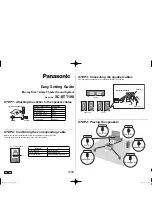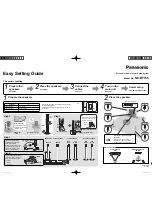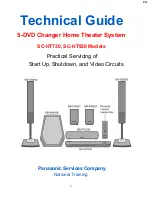
Recommended BIAmP cRossoveR fRequencIes
Low/High
TRx12N
1.75kHz - 3kHz
TRx2115
1.75kHz - 3kHz
TRx2215
2.5kHz - 4kHz
Low/Mid-Hi
TRx2153
400Hz - 700Hz
Low Pass
TRx2118
80Hz - 100Hz
TRx2218
80Hz - 100Hz
TRx2121
80Hz - 100Hz
TRx Loudspeakers are designed to be used with professional power amplifiers
capable of producing the correct power into equivalent speaker loads. Care should
be taken to avoid amplifier clipping. Due to the fact that music signals have a high
peak-to-average “crest” factor, a lesser power amplifier driven into clipping is more
likely to damage a speaker than a higher power amplifier used within its ratings. When
an amplifier is over driven, its output waveform is clipped or squared off reducing
the crest factor. If an amplifier is extremely over driven, the output waveform can
approach that of a square wave. Under these extreme conditions, an amplifier is
capable of producing far more power than its un-distorted rated power output.
Carvin recommends an amplifier capable of producing at least the power rating of
the speaker up to 1.5 times the power rating of the speaker.
(See TECHNICAL SPECIFICATIONS).
Always turn on the amplifiers after the mixer and control systems have been
powered on. This will eliminate power peaks due to switch on surges which can
damage loudspeakers. When powering down the system, reverse the sequence and
switch off the power amplifiers first.
1
1. input
(4-pin twist-loc)
Full range input, external crossover
required.
TRx2118, TRx2218 & TRx2121
do not
have an internal passive crossover.
2. through
(4-pin twist-loc)
This jack is wired in parallel with the
input jack for daisy chaining additional
enclosures.
1. input
(4-pin twist-loc)
Full range or bi-amp depending on the position of the BIAMP switch.
2. through
(4-pin twist-loc)
This jack is wired in parallel with the input jack for daisy chaining additional enclosures.
3. BiAMp switch
Changes between full range or bi-amped inputs. DO NOT use with PIN FLIP.
4. pin Flip switch
NORMAL
This cabinet is powered through Twist-Loc pins
1+, 1-
Use in Full Range Mode or BIAMP mode.
PIN FLIP
This cabinet is powered through Twist-Loc pins
2+, 2-
Use in Full Range Mode only.
DO NOT use in BIAMP mode.
With PIN FLIP other cabinets can be daisy chained on the same 4-conductor cable and
powered from a different amp/channel on Twist-Loc pins 1+, 1-
TRx2115, TRx2153 & TRx2215 Connection Plate
TRx12N Connection Plate
TRx2118, TRx2218, TRx2121 Connection Plate
connecTInG TRx
The rear panels of the the TRx loudspeakers are fitted with 4-pin Twist-Loc
connectors. All connectors are wired in parallel.
4 pin
Bi-amp
Passive subwoofers
1+
Low Freq. Positive Positive Input Positive Input
1–
Low Freq. Negative Negative Input Negative Input
2+
High Freq. Positive Through
Through
2–
High Freq. Negative Through
Through
1. input
(4-pin twist-loc)
Full range or bi-amp input depending on
the position of the BIAMP switch.
2. through
(4-pin twist-loc)
This jack is wired in parallel with the
input jack for daisy chaining additional
enclosures.
3. BiAMp switch
Changes between full range or bi-amped
inputs.
2
4
3
choosing thE corrEct AMpliFicAtion






















